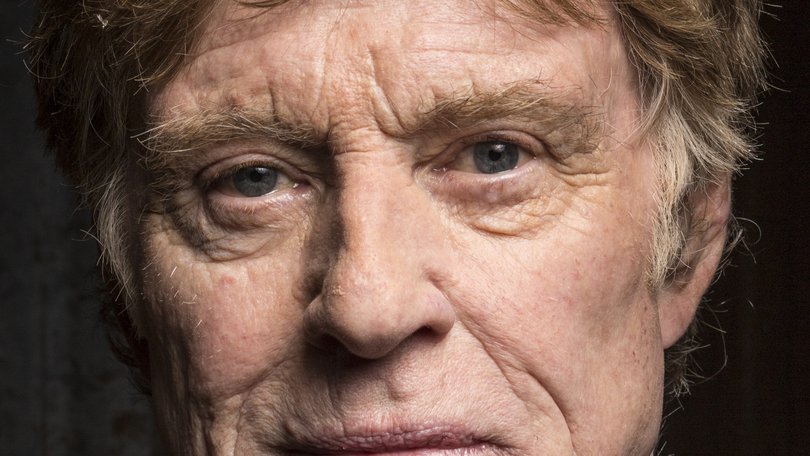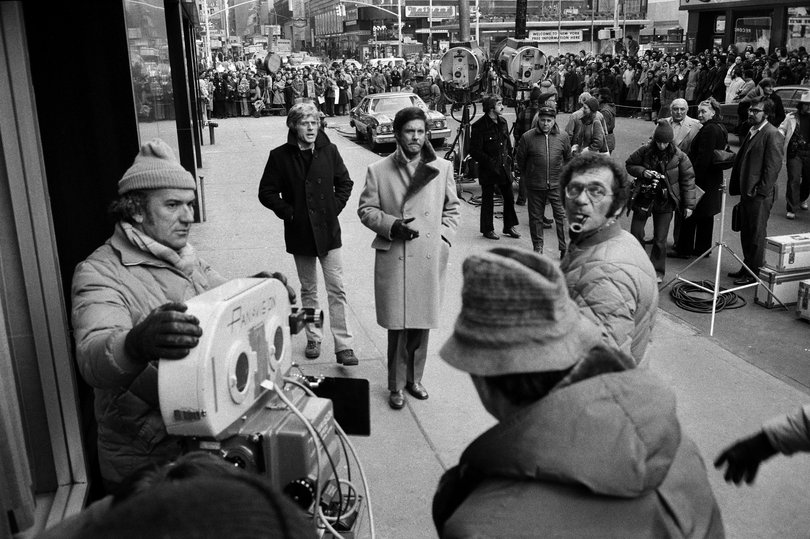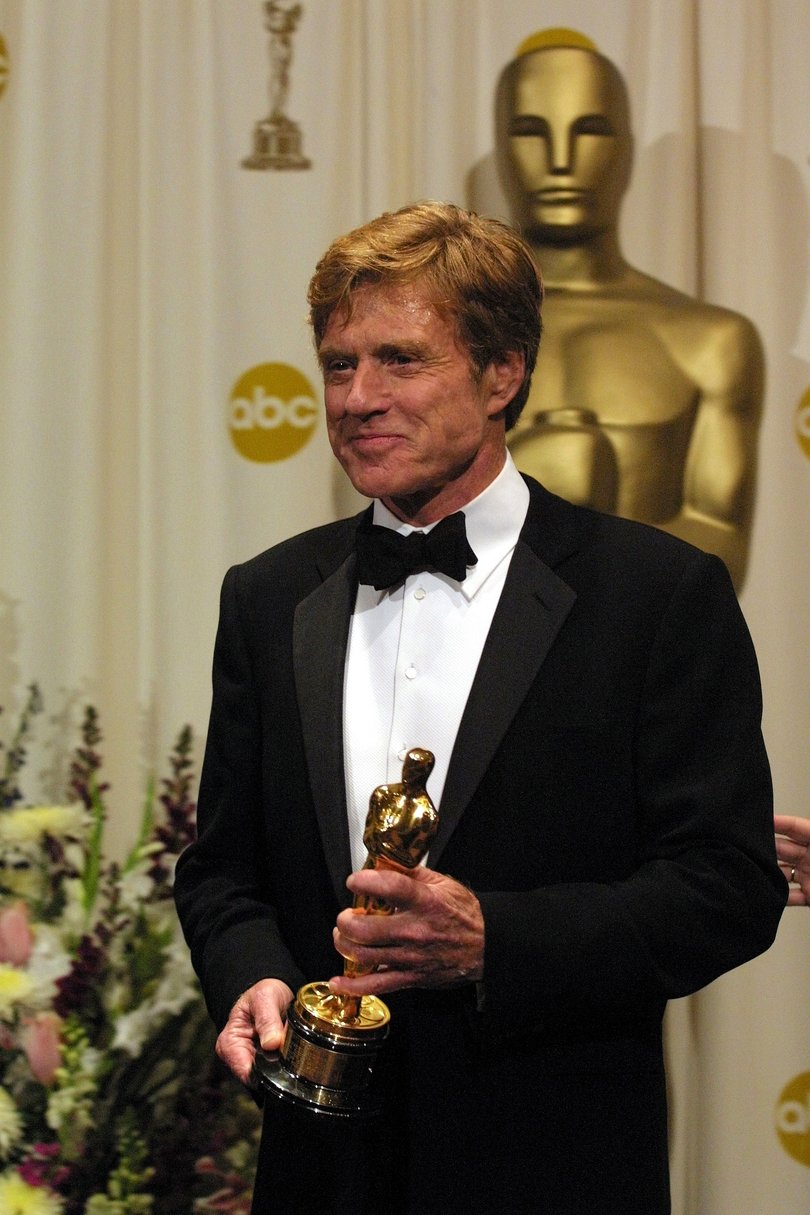Robert Redford, screen idol turned director and activist, dies at 89

Robert Redford, the big-screen charmer turned Oscar-winning director whose hit movies often helped America make sense of itself and who, off-screen, evangelized for environmental causes and fostered the Sundance-centered independent film movement, died early Tuesday at his home in Utah. He was 89.
His death, in the mountains outside Provo, was announced in a statement by Cindi Berger, the CEO of publicity firm Rogers & Cowan PMK. She said he had died in his sleep but did not provide a specific cause. He was in “the place he loved surrounded by those he loved,” the statement said.
With a distaste for Hollywood’s dumb-it-down approach to moviemaking, Redford typically demanded that his films carry cultural weight, in many cases making serious topics like grief (familial, societal) and political corruption resonate with audiences, in no small part because of his immense star power. Unlike other stars of his calibre, he took risks by exploring dark and challenging material; while some people might only have seen him as a sun-kissed matinee god, his filmography — like his personal life — contained currents of tragedy and sadness.
Sign up to The Nightly's newsletters.
Get the first look at the digital newspaper, curated daily stories and breaking headlines delivered to your inbox.
By continuing you agree to our Terms and Privacy Policy.As an actor, his biggest films included Butch Cassidy and the Sundance Kid (1969), with its loving look at rogues in a dying Old West, and All the President’s Men (1976), about the journalistic pursuit of President Richard M. Nixon in the Watergate era. (Redford played Bob Woodward and used his clout in Hollywood to bring the book of the same name, by Woodward and Carl Bernstein, to the screen.) In Three Days of the Condor (1975) Redford was an introverted CIA analyst caught in a murderous cat-and-mouse game. The Sting (1973), about Depression-era grifters, gave Redford his first and only Oscar nomination as an actor.
Redford was one of Hollywood’s preferred leads for decades, whether in comedies, dramas or thrillers; he had range. Studios often sold him as a sex symbol. Although he was a subtle performer with a definite magnetism, his body of work as a romantic leading man owed a great deal to the commanding actresses who were paired with him — Jane Fonda in Barefoot in the Park (1967), Barbra Streisand in The Way We Were (1973), Meryl Streep in Out of Africa (1985).
“Redford has never been so radiantly glamorous,” critic Pauline Kael wrote in The New Yorker, “as when we saw him through Barbra Streisand’s infatuated eyes.”
He branched into directing in his 40s and won an Academy Award for his first effort, Ordinary People (1980), about an upper-middle-class family’s disintegration after a son’s death — a story that reflected the repressed grief and emotional silence in his own family after the death of his mother when he was a teenager. Ordinary People won three other Oscars, including for best picture.

His next film as a director, The Milagro Beanfield War (1988), a comedic drama about a New Mexican farmer denied water rights by uncaring developers, was a flop. But Redford stubbornly refused to pursue less esoteric material. Instead, he directed and produced A River Runs Through It (1992), a spare period drama about Montana fly fishermen pondering existential questions, and Quiz Show (1994), about a notorious 1950s television scandal. Quiz Show was nominated for four Oscars, including best picture and best director.
Perhaps Redford’s greatest cultural impact was as a make-it-up-as-he-went independent film impresario. In 1981, he founded the Sundance Institute, a non-profit dedicated to cultivating fresh cinematic voices. He took over a struggling film festival in Utah in 1984 and renamed it after the institute a few years later. (He had been a local since 1961, having spent some of his early earnings as an actor on two acres of land in Provo Canyon. He often said he liked Utah because it gave him a sense of peace and was the antithesis of Hollywood superficiality.)
The Sundance Film Festival, in Park City, became a global showcase and freewheeling marketplace for American films made outside the Hollywood system. With heat generated by the discovery of talents like Steven Soderbergh, who unveiled his Sex, Lies and Videotape at the festival in 1989, Sundance became synonymous with the creative cutting edge.
Preferring life on his secluded Utah ranch, Redford created the image of a reluctant star. His Hollywood career, he insisted with characteristic orneriness, was incidental to his real concerns, one of which was the environment. In many ways, he created the actor-as-environmentalist archetype that stars like Leonardo DiCaprio and Mark Ruffalo would adopt.
Redford did not like to be called an activist, a label he found too severe. But an activist he was.
In 1970, he successfully campaigned against a six-lane highway that was proposed in a Utah canyon (where one year he received eight tickets for speeding, rounding the curves in a Porsche Carrera).
For five decades, Redford was a trustee of the Natural Resources Defence Council. In 1976, he used his clout to help block the construction of a coal-fired power plant in Utah that had been championed by business leaders as a crucial source of jobs. His campaign against the plant included a 36-page photo spread in National Geographic magazine featuring himself on horseback on the scenic Kaiparowits plateau, where construction was to begin. His efforts sparked a backlash — he was called a liberal carpetbagger — and residents of one Utah town burned him in effigy.
A California Youth
Charles Robert Redford Jr. was born August 18, 1936, in Santa Monica, California. His parents, Charles Redford and Martha Hart, married three months later. (Early in his career, 20th Century Fox publicists officially placed Redford’s birth in 1937, a falsehood that was often repeated over the years.)
After working as a milkman, Redford’s mercurial father became an accountant and was eventually employed by Standard Oil of California. His mother died in 1955, when Redford was in his late teens; the cause was a blood disorder associated with the birth of twin girls, who had lived only a short while, leaving Redford an only child. Her death left him angry and disillusioned.
“I’d had religion pushed on me since I was a kid,” he later told a biographer, Michael Feeney Callan. “But after Mom died, I felt betrayed by God.”
Later in life, Redford, in dozens of interviews, told and retold the story of his California youth. It was an oral history in which the details sometimes shifted. He liked to cast himself in memory as a juvenile delinquent, sometimes mentioning gang fights, other times hubcap stealing and nights spent in jail. “There was great fear I was going to end up a bum,” he told TV Guide in 2002. He found Van Nuys, the Los Angeles neighbourhood where the family lived, to be unbearably conformist and dull — revealing a rebellious nature that never left him.
Little was ever mentioned of early show business connections that suggested the possibility of a screen future, although he spoke about getting laughed off the Warner Bros. lot at age 15 when asking for stunt work.
In fact, at schools in west Los Angeles, he kept company with children of screenwriter Robert Rossen (The Hustler), actor Zachary Scott (Mildred Pierce) and Metro-Goldwyn-Mayer president Dore Schary. In 1959, Schary produced a Broadway play, The Highest Tree, in which Redford had one of his first stage roles.
He had made his Broadway debut earlier that year in Tall Story, in which he had a one-line part. His most successful Broadway appearance was as an uptight lawyer in the Neil Simon comedy about newlyweds, Barefoot in the Park, in 1963, directed by Mike Nichols and co-starring Elizabeth Ashley as a free-spirited wife.
After high school, Redford attended the University of Colorado on a baseball scholarship, but he soon dropped out, having chafed at too much “bureaucracy,” as he put it. He had also developed a fondness for all-night beer parties.
For more than a year he bounced around Europe, where he studied art at the École des Beaux-Arts in Paris, aspired to paint, and — working through what he later described as profound depression — sold sidewalk sketches for pocket cash. (He had been a talented illustrator since high school.)
Back in Los Angeles, he did oil-field work and met several Mormon students who were sent to proselytize after their first year at Brigham Young University in Utah. He dated one of them, Lola Van Wagenen, and married her in 1958.
The couple would become rooted in Utah. “It’s not trying to pretend to be something it’s not,” he told Rocky Mountain magazine in 1978, comparing Utah with Los Angeles, which he called phony and superficial. “It doesn’t invite you in and then kick you in the shins.”
Box-Office Gold
Redford enjoyed being a sex symbol, except when he didn’t. “This glamour image can be a real handicap,” he complained in a 1974 profile in The New York Times.
Nonetheless, it was his broad grin, tousled reddish-blond hair and all-American look (“WASP jock” in his own words) that first won the audience to his side. Butch Cassidy and the Sundance Kid was a well-reviewed picture, but it succeeded at the box office in large part because Redford — with deft comedic timing honed from Neil Simon and years of TV work — was paired with another matinee idol, Paul Newman. They recaptured their chemistry in 1973 for the same director, George Roy Hill, with The Sting.
Reviewing The Sting for the Times, Vincent Canby described the film as “Mr Newman and Mr Redford, dressed in best, fit-to-kill, snap-brim hat, thirties splendour, looking like a couple of guys in old Arrow shirt ads.”
His other acting successes included Jeremiah Johnson (1972), about a legend-in-his-own-time mountain man, and The Natural (1984), the quintessentially American story of a man who gets a second chance at his dream baseball career. Sneakers (1992), a breezy caper starring Redford as a security hacker, reflected his occasional willingness to embrace popcorn cinema.
His riskier films — pictures that got made based on his star power but defied expectation — included the ski drama Downhill Racer (1969), in which he played an arrogant athlete, and The Candidate (1972), a coldly comic commentary on the bewildering state of American politics. He managed to turn The Great Waldo Pepper (1975), about disillusionment in America after World War I, and The Electric Horseman (1979), a comedic romance about a washed-up rodeo star, into box-office hits.
Redford’s biggest ticket seller as an actor (not counting two late-career Marvel films in which he played supporting roles) was the 1993 morality tale Indecent Proposal, which co-starred Demi Moore and Woody Harrelson and took in $US267 million ($400m), or $US590 million in today’s dollars. In her Indecent Proposal review for the Times, Janet Maslin called Redford “one of the screen’s great flirts.” (Redford later expressed regret about Indecent Proposal. He said that he had signed on because he was intrigued by the psychological and ethical questions it raised about love, fidelity and the corrupting power of money, but that those themes were flattened in the sensationalistic final version of the film.)

Redford’s marriage to Van Wagenen produced four children: Shauna, Amy, David James (known as Jamie) and Scott, who died of sudden infant death syndrome at 2 1/2 months. The marriage ended in divorce in 1985. Redford married Sibylle Szaggars, a German artist he had met at the Sundance Institute, in 2009.
By then, Redford had seen his family through grief and trauma that occasionally rivalled what he portrayed in Ordinary People. In 1983, his daughter Shauna’s boyfriend, Sidney Lee Wells, was shot dead in Colorado. The incident fed Redford’s reclusive tendencies, according to Robert Redford: The Biography (2011), by Callan. Shauna subsequently survived a gruesome car accident that left her vehicle submerged in water, with her inside.
Just as Redford began Quiz Show, he saw his son Jamie through two liver transplants that overcame the effects of a chronic disease. Jamie died of cancer of the bile ducts in 2020 at 58.
In addition to his wife, Redford’s survivors include two daughters, Shauna Redford Schlosser and Amy Redford, and seven grandchildren.
This article originally appeared in The New York Times.
© 2025 The New York Times Company
Originally published on The New York Times
